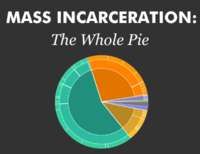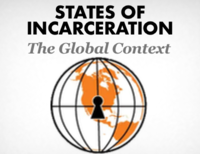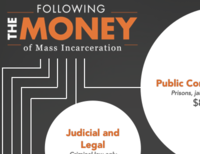Thank you,
—Peter Wagner, Executive Director
Donate
New Jersey profile
New Jersey has an incarceration rate of 270 per 100,000 people (including prisons, jails, immigration detention, and juvenile justice facilities), meaning that it locks up a higher percentage of its people than almost any democratic country on earth. Read on to learn more about who is incarcerated in New Jersey and why.
24,000 people from New Jersey are behind bars
Additionally, the number of people impacted by county and city jails in New Jersey is much larger than the graph above would suggest, because people cycle through local jails relatively quickly. Each year, at least 86,000 different people are booked into local jails in New Jersey.
Using 2020 census data, we looked at where people in New Jersey prisons come from. We found they come from all corners of the state, but disproportionately from the state's largest and smallest communities.
Rates of imprisonment have grown dramatically in the last 40 years
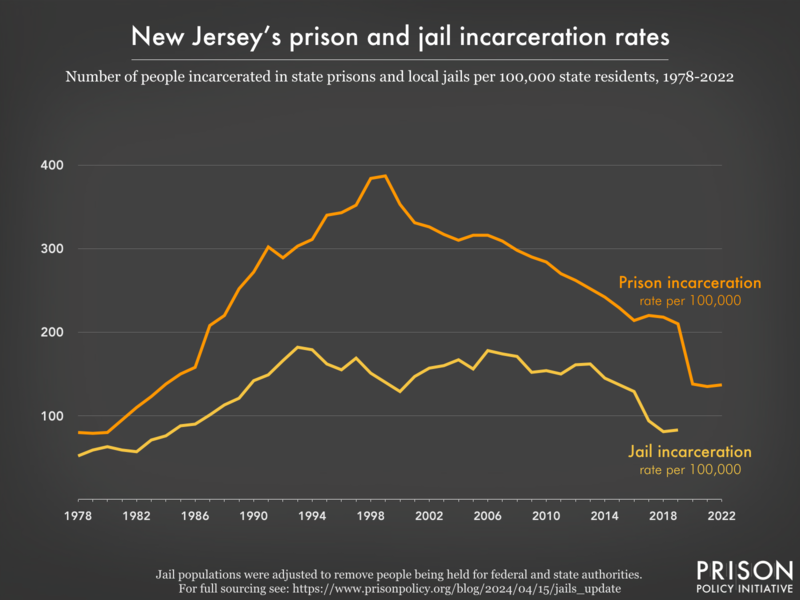
- total numbers rather than rates.
- Women’s prisons: Incarceration Rates | Total Population
- Men’s prisons: Incarceration Rates | Total Population
Today, New Jersey’s incarceration rates stand out internationally

People of color are overrepresented in prisons and jails
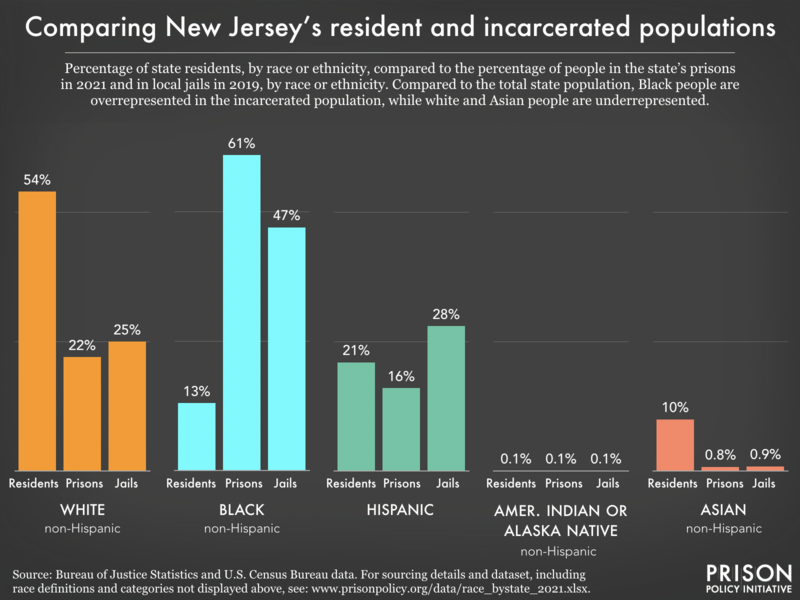
New Jersey's criminal justice system is more than just its prisons and jails
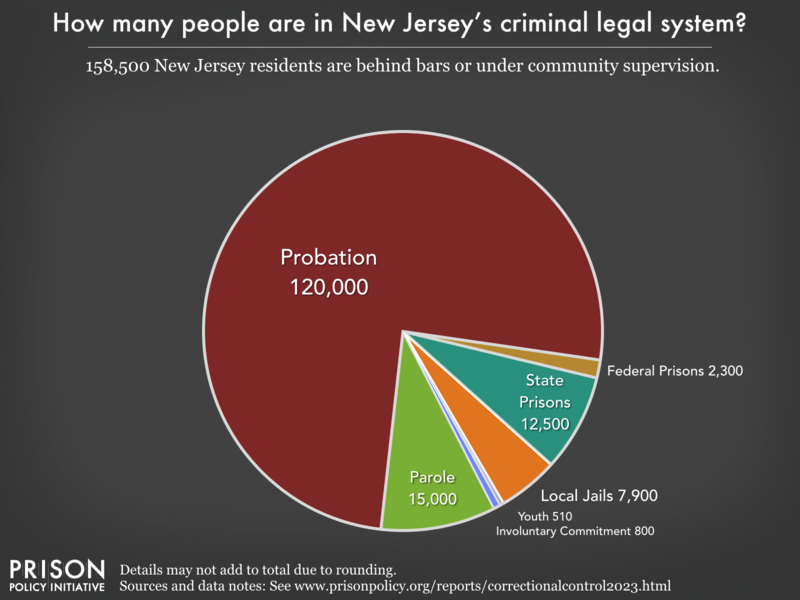
Reports and briefings about New Jersey's criminal legal system:
Filter to show
- People on probation in New Jersey are saddled with onerous rules and conditions they must follow every day or risk incarceration.
- Prisons in New Jersey have tablets, but they may be being used to restrict incarcerated people’s access to books and sap them of the little money they have.
- With an incarceration rate of 270 per 100,000 residents, New Jersey locks up a higher percentage of its people than almost any democratic country on earth.
- During the 2020 redistricting cycle, New Jersey successfully reallocated roughly 90% of people in state prison back to their home communities, as part of its efforts to end prison gerrymandering.
- Prisons in New Jersey force incarcerated people and their families — some of the most vulnerable members of society — to subsidize mass incarceration.
- 57% of people in New Jersey jails have not been convicted of a crime, meaning they're legally innocent. There are simple steps the state can take to reduce this number. Why isn't it?
- New Jersey releases roughly 109,588 men and 17,389 women from its prisons and jails each year. What is it doing to support them upon reentry?
- The parole board in New Jersey is releasing 56% fewer people and holding 56% fewer hearings since the pandemic started
- Black people in New Jersey are incarcerated at a rate 11.9 times higher than white people.
- New Jersey's choice to criminalize "failure to appear" may be hurting public safety
- The cost of incarcerating older people is incredibly high, and their risk of reincarceration is incredibly low, yet 11% of people in New Jersey prisons are over the age of 55. Why is the state keeping so many older people locked up?
- Prisons in Northeastern states, like New Jersey, have seen the greatest increase in deaths during heatwaves.
- Data from New Jersey and other jurisdictions shows: Releasing people pretrial doesn't harm public safety
- New Jersey makes it difficult or even risky for incarcerated journalists to tell their stories.
- New Jersey is one of 20 states that locks up some people convicted of sex offenses in shadowy "civil commitment" facilities, long after their sentences are over — and often indefinitely.
- In New Jersey, 24,000 people are incarcerated and another 135,000 are on probation or parole.
- New Jersey charges up to 35¢ for an e-message to or from prison, well above the national average.
- New Jersey passed a caregiver proximity law requiring that a primary caregiver is incarcerated in a facility as close as possible to where their child(ren) reside.
- Jails in New Jersey charge up to $3.15 for a 15-minute phone call, reaping profits for companies, while prisons charge 66¢ for a 15-minute call.
- Report:
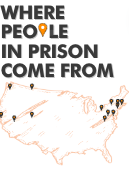 Where people in prison come from: The geography of mass incarceration in New Jersey
Where people in prison come from: The geography of mass incarceration in New Jersey - New Jersey suspended its $5 medical copays in prisons at the beginning of the pandemic for flu related medical visits — but should eliminate them completely.
- People in New Jersey prisons must pay for hygiene items and other basics unless they have zero funds in their account and no financial support.
- New Jersey prisons charge families up to a 15% fee to transfer money to an incarcerated loved one.
- We gave New Jersey a "C" grade in September 2021 for its response to the coronavirus in prisons.
- New Jersey hinders jury diversity by excluding people with felony records and some prior misdemeanors
- How many COVID-19 cases in New Jersey communities can be linked to outbreaks in correctional facilities? (data from our report Mass Incarceration, COVID-19, and Community Spread)
- In 2020, passed legislation making it the seventh state to end prison gerrymandering.
- We graded the parole release systems of all 50 states - New Jersey gets a C
- New Jersey incarcerates women at a rate of 53 per 100,000 residents — higher than almost any democratic country on earth.
- People in New Jersey prisons earn as little as 26¢ an hour for their work.
- New Jersey legislation aims to protect in-person visits from video visitation
- New Jersey is 1 of only 8 states still suspending driver's licenses for drug offenses unrelated to driving
Other resources
- Research on New Jersey in our Research Library
- Learn more about the history of prison gerrymandering in New Jersey campaign and resource page
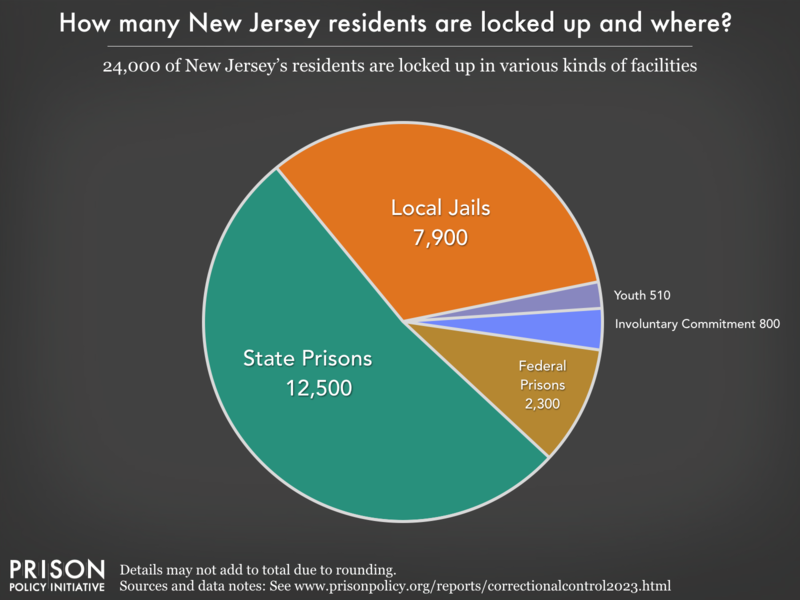
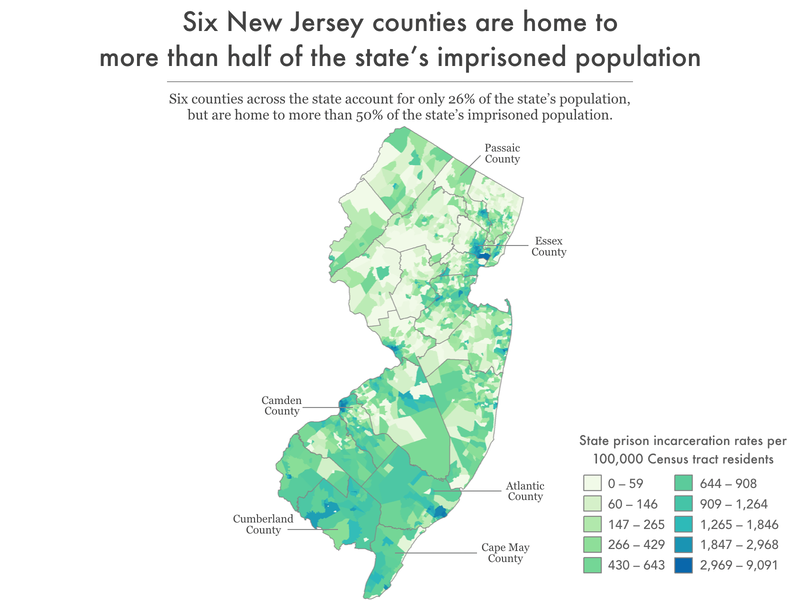
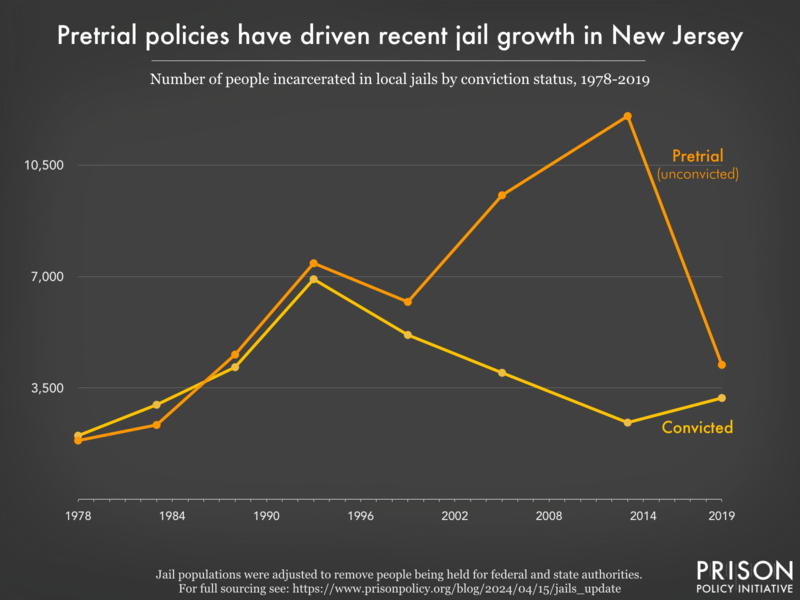
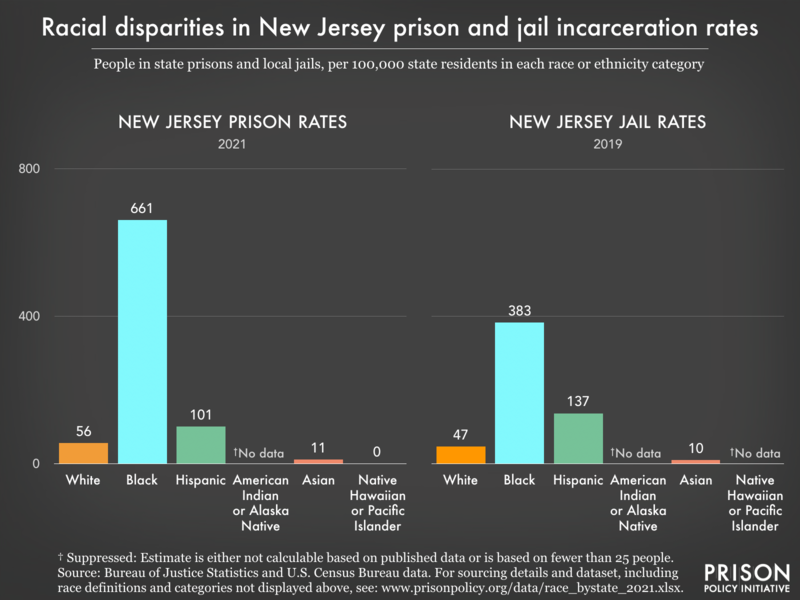
 Where people in prison come from: The geography of mass incarceration in New Jersey
Where people in prison come from: The geography of mass incarceration in New Jersey
